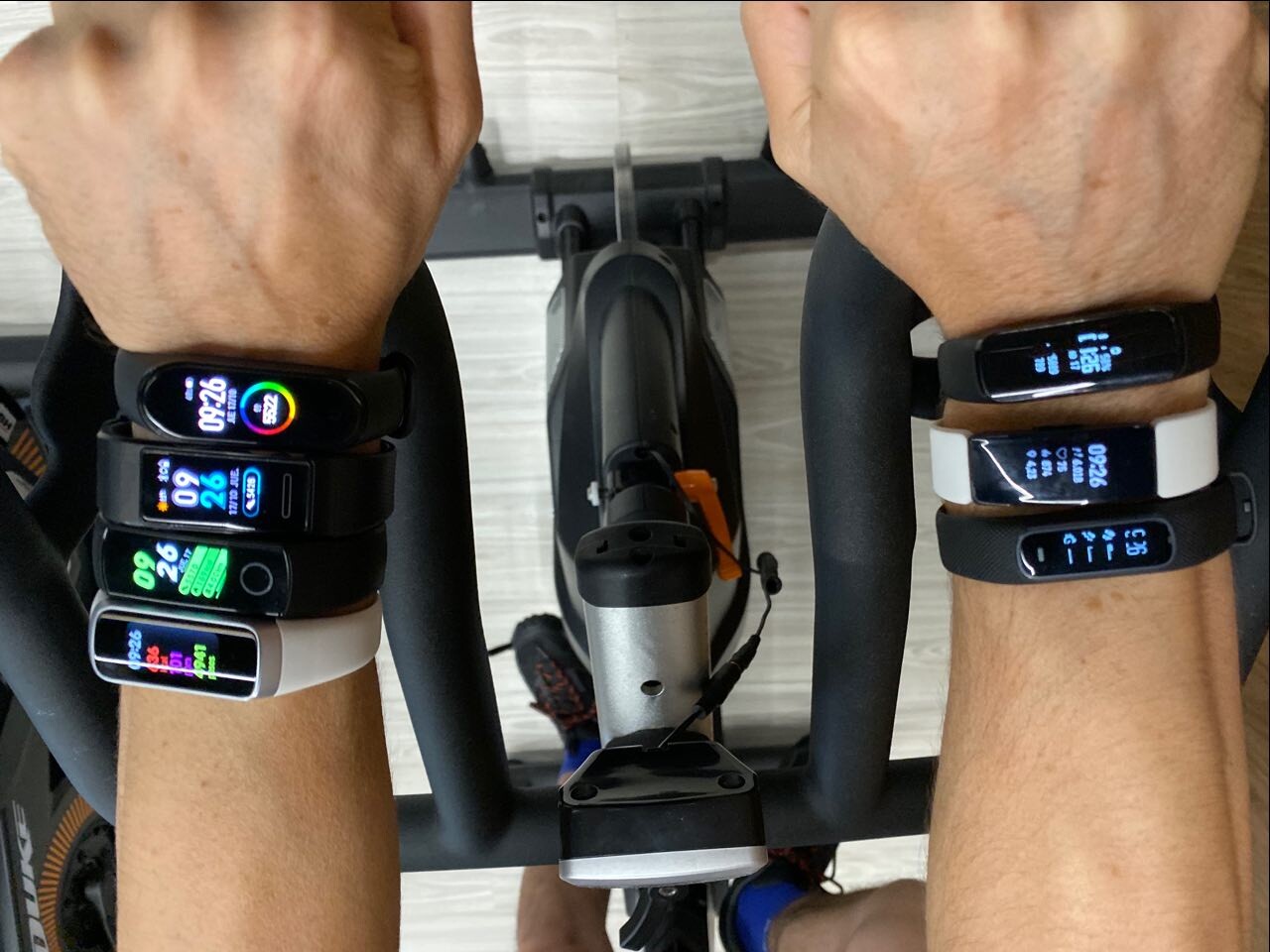
If smartwatches are too big for you or you’re just looking for easier monitoring, fitness trackers are the wearable you’re looking for (although there are also cheap smartwatches that might be to your liking). Thinking of buying a monitor bracelet? In this activity bracelet purchase guide, you will find recommendations on your choice and a complete selection of models.
How to choose an activity bracelet
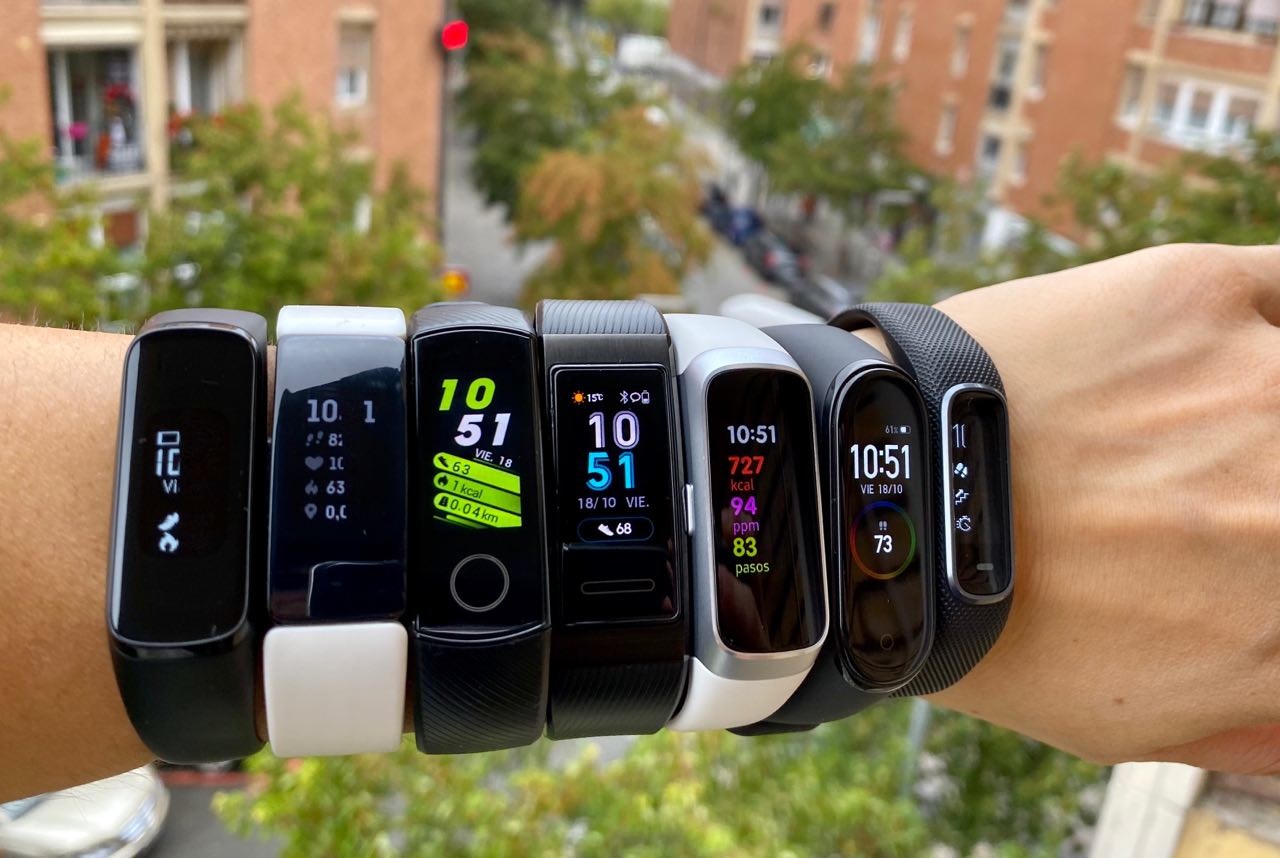
Activity bracelets are affordable devices (in general, if we compare them with smartwatches) to monitor our day-to-day. The offer is less than that of smartwatches, but that does not mean that we cannot make a mistake in our choice with a model that does not meet our expectations or that we do not get along with it. Below we compile the main recommendations for choosing an activity bracelet in 2022:
- What do they measure? They have a basic sensor responsible for recording our activity’s metrics. The minimum is that they have an accelerometer to measure steps, gyroscopes to determine what we do, and photodiodes to control our pulse. From here and knowing our characteristics, they estimate our calorie consumption. This is what the simplest models offer. It is also common for them to be able to approximate our hours of sleep. This COVID era has also popularized blood oxygen measurement on wristbands and watches using SpO2 sensors. The most complete and ambitious models also integrate GPS geopositioning systems to record our position independently of the mobile.
- Its autonomy and way of charging. A small space can store a ditto battery, but its simple proposal also helps extend autonomy. The normal thing is that they move around the week of duration. If the bracelet is going to be used by a low-tech person (it is one of the star gifts for the elderly who have to move more), it is important that the loading is easy and intuitive.
- The activity bracelets must be resistant and comfortable since the idea is that you forget that you are wearing them (if you have sensitive skin, look for those straps with hypoallergenic materials) and that they support eventual bumps and scratches. In the same way, sweat, rain, or shower will put them to the test sooner or later, even if you don’t swim. In this sense, all* the bracelets offer some resistance to water. If you also practice swimming, look for bracelets that guarantee not only that they withstand exposure to water but also that they monitor this sport.
- That they go with you in your day-to-day implies that they should not clash with your outfit or, at least, that they adapt to it. Here you can either bet on minimalist and fine models to minimize their aesthetic impact or on those with many compatible straps.
- Comfortable screen vs. comfortable bracelet. Of course, remember that the widest bracelets have space to accommodate larger panels (although the edges have a lot to say), making them more comfortable for viewing data. In return, they will inevitably be more voluminous. A thinner bracelet is less noticeable, but we must resort more to the mobile.
- The screens will be small, but that doesn’t mean they offer a bad experience. Likewise, you will also find mono-color or color models, making it easier to identify the data, although it is not dramatic. In any case, make sure that the interface is intuitive and looks good even on the brightest days (hint: look at the brightness they provide and if it is adjustable). If they do not offer that information, our analysis can help you.
- To a greater or lesser extent, the display of data falls on the mobile, so it does not hurt to ensure that it is compatible and what its interface is like. Simplicity becomes even more important if the device is for a low-tech person. There are brands like Fitbit, Xiaomi, or Huawei that have connected scales that, in addition to being fully compatible, bring everything together in the same place.
Featured models
Amazfit Band 5
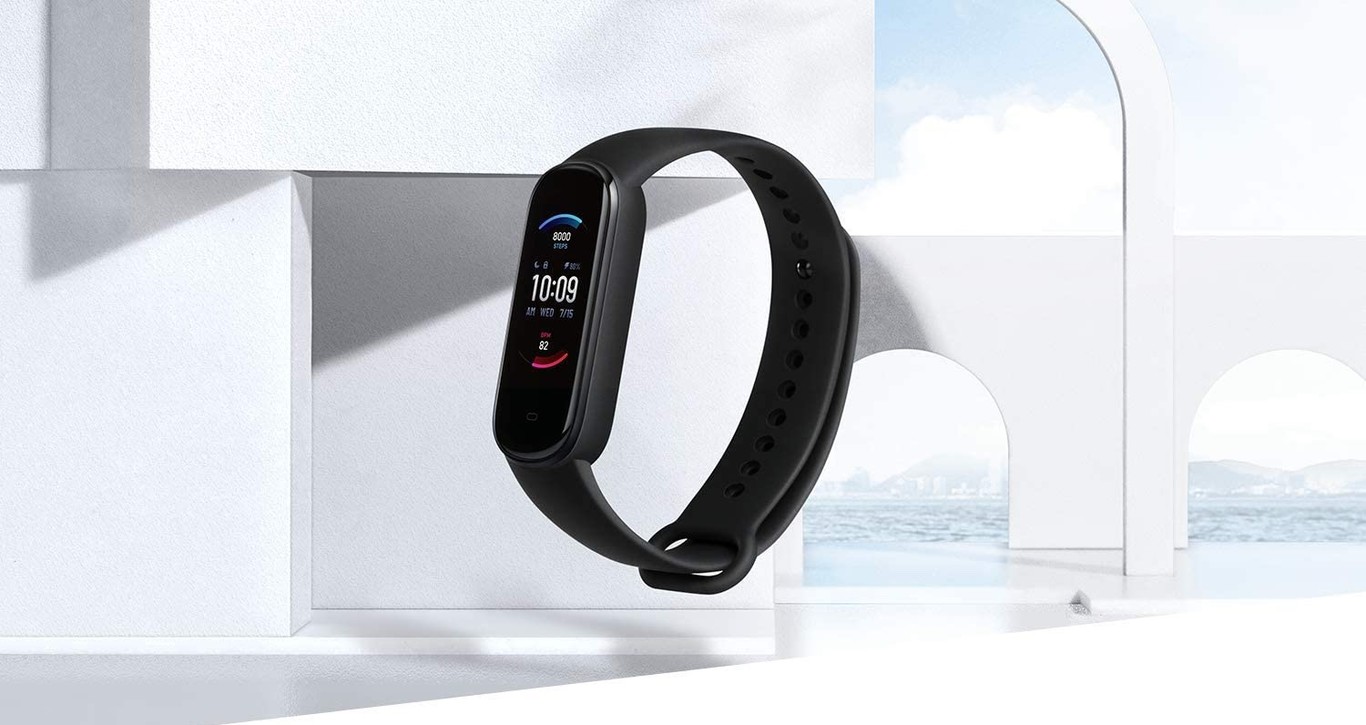
Speaking fast and easy, the Amazfit Band 5 ( 24 euros ) is something like a vitaminized Xiaomi Mi Band 5. And it is that the Huami bracelet looks practically the same and its benefits are also very similar except that it measures blood oxygen.
With a large color OLED screen with always-on mode, it is capable of recording up to 11 different sports and stands out for its 25 days of (theoretical) autonomy. A veteran option (the Amazfit Band 7 is about to be launched in Spain) but that stands out in quality-price.
Honor Band 6
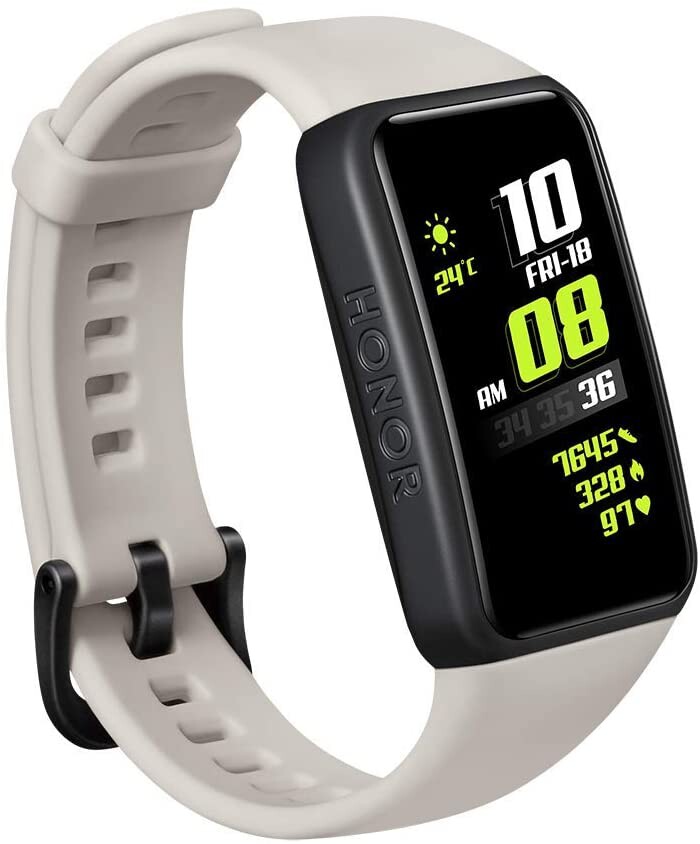
The heiress of the Honor Band 5 (a beastly model in terms of price-quality) is this Honor Band 6 ( 36.90 euros with a coupon), a bracelet with a sporty vocation inside and out.
An elongated AMOLED screen stands out for being around two weeks of battery life, a basic metric, and offers blood oxygen saturation and magnetic charging.
Xiaomi band 7
The latest generation of the most popular wearable for the wrist, the Xiaomi Band 7 ( 49 euros ), is a great candidate for those looking for great autonomy and a complete proposal for the format without losing simplicity. This latest installment has a larger screen, more battery, and more monitoring and training functions (120 activities).
Huawei Band 6

Another model with an elongated design halfway between the bracelet and the watch is the Huawei Band 6 ( 39 euros ), a great candidate for value for money.
It has a 1.47″ AMOLED screen with a resolution of 194 x 368 pixels, minimalist design, acceleration, gyroscope, and heart rate sensors. Among its assets, is the measurement of blood oxygen saturation and its 180 mAh battery for an approximate autonomy of up to two weeks.
Samsung Galaxy Fit2
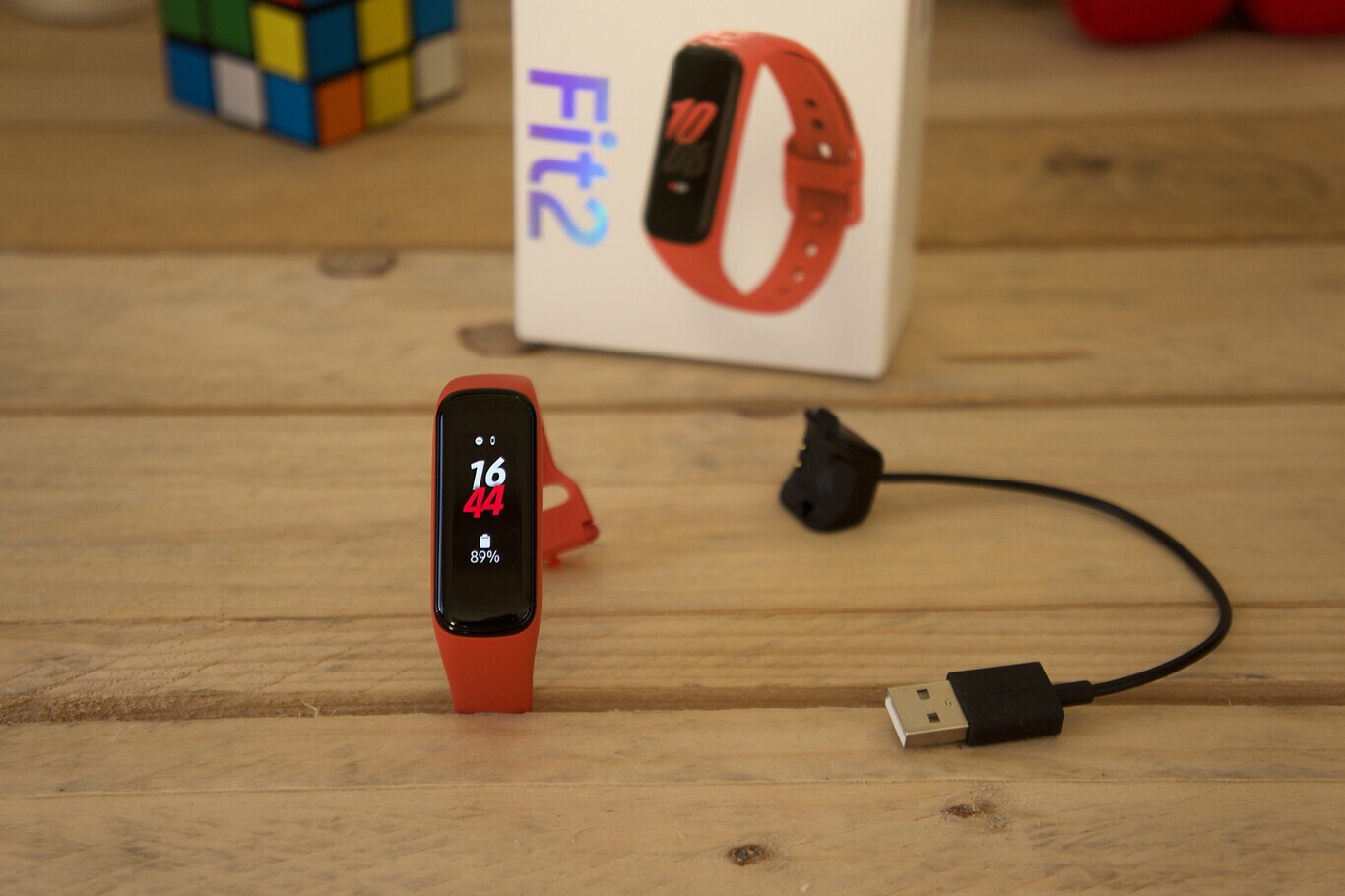
With the veteran Samsung Galaxy Fit2 ( 44 euros ), the Korean firm has polished its previous model seeking to become strong in quality-price for those looking for a simple and comfortable bracelet in every way.
Among the arguments for this is an autonomy that can go up to three weeks (although the usual thing is that it is two) and a large screen in size and quality of the AMOLED type of 1.1 inches in color.
Garmin Vivosmart 4
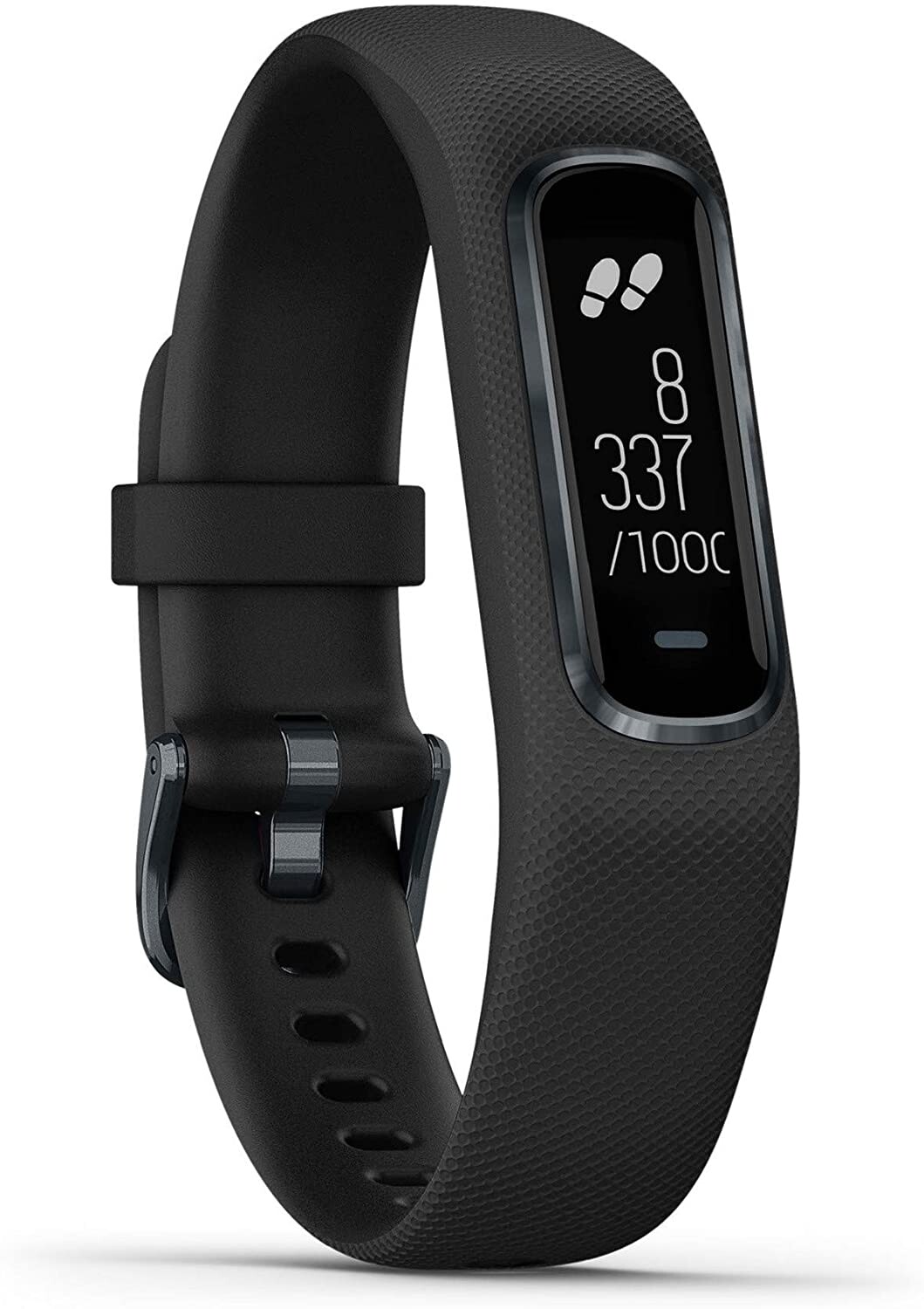
For those who want to record their activity with a device that is as compact and discreet as possible, this very narrow Garmin Vivosmart 4 ( 84 euros ) with a comfortable silicone strap. It has a compact mono-color OLED screen to show basic data; for the rest, it is better to go to the mobile, where the complete and careful Garmin app will show the rest.
In addition to the usual steps, calories, heart rate, and distance, it measures sleep and oxygen saturation and estimates our energy and stress. Despite its size, autonomy is approximately one week.
Fitbit Inspire HR

Veteran model this Fitbit Inspire HR ( 119 euros ), which is still a great option for wrist comfort, simplicity, and a complete app.
Despite having been on the market for a couple of years, Inspire HR offers a current metrics proposal if you are looking for something basic: sleep, heart rate, steps, distance, calories, health, inactivity, and a good collection of sports.
Its screen is mono-color, but it is very easy to understand and looks good. As for autonomy, it is around five days.
Fitbit Charge 4
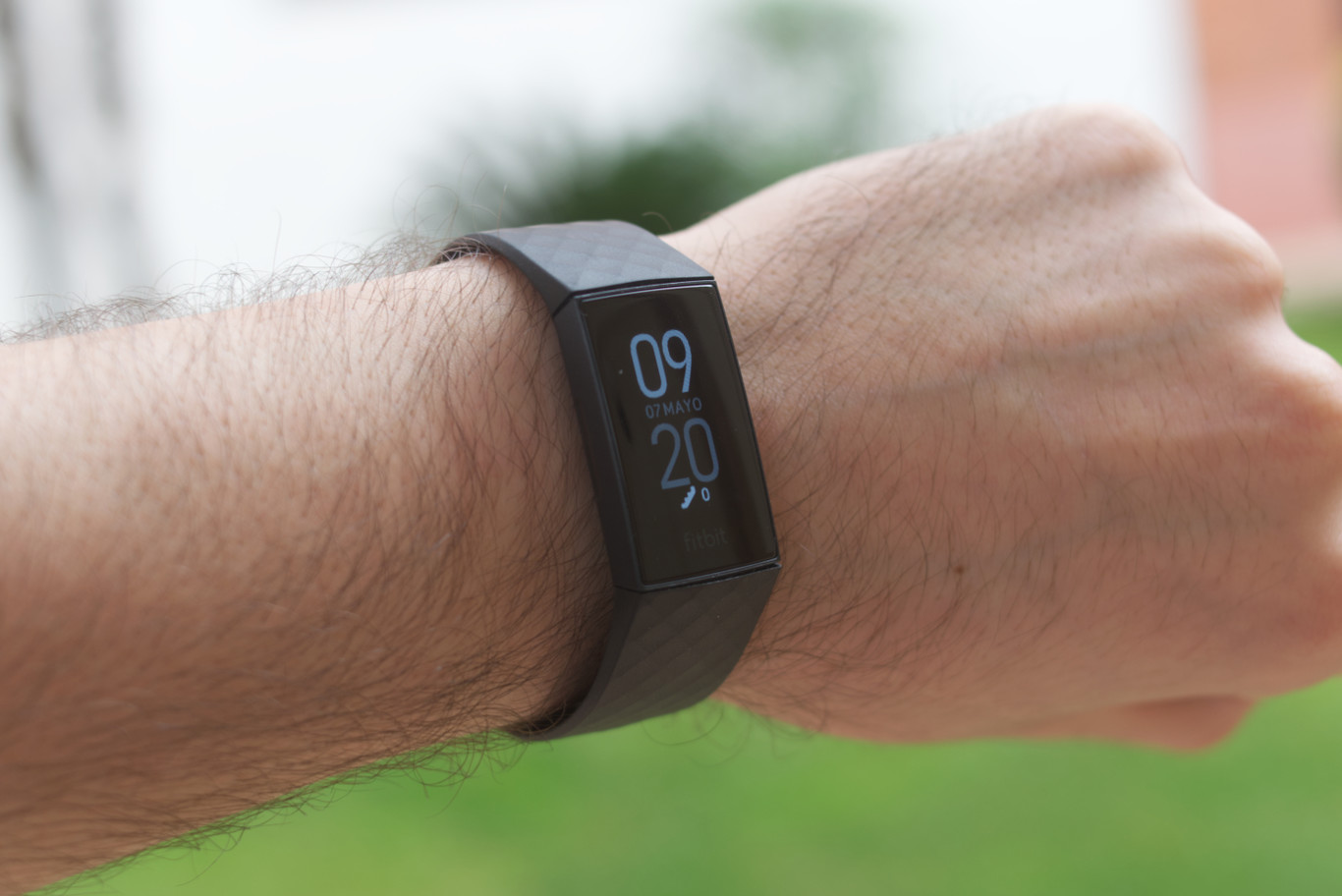
If the most dissuasive thing about smartwatches is their size, but you want something a step above the usual activity bracelet, the Fitbit Charge 4 ( 124 euros ) is the candidate. Although yes, you can buy several cheap smartwatches for what this wearable costs.
We are facing the most complete bracelet on the market, with a very light minimalist design with an OLED touch screen that is surprisingly monochrome.
Among its assets for sports are the Fitbit health ecosystem, GPS with an integrated altimeter to improve position recording in outdoor sports, blood oxygen meter, and 50-meter water resistance.
But it also offers interesting day-to-day features such as NFC for payments (rare in bracelets), vibration motor, and a range of approximately one week.

Sharlene Meriel is an avid gamer with a knack for technology. He has been writing about the latest technologies for the past 5 years. His contribution in technology journalism has been noteworthy. He is also a day trader with interest in the Forex market.















